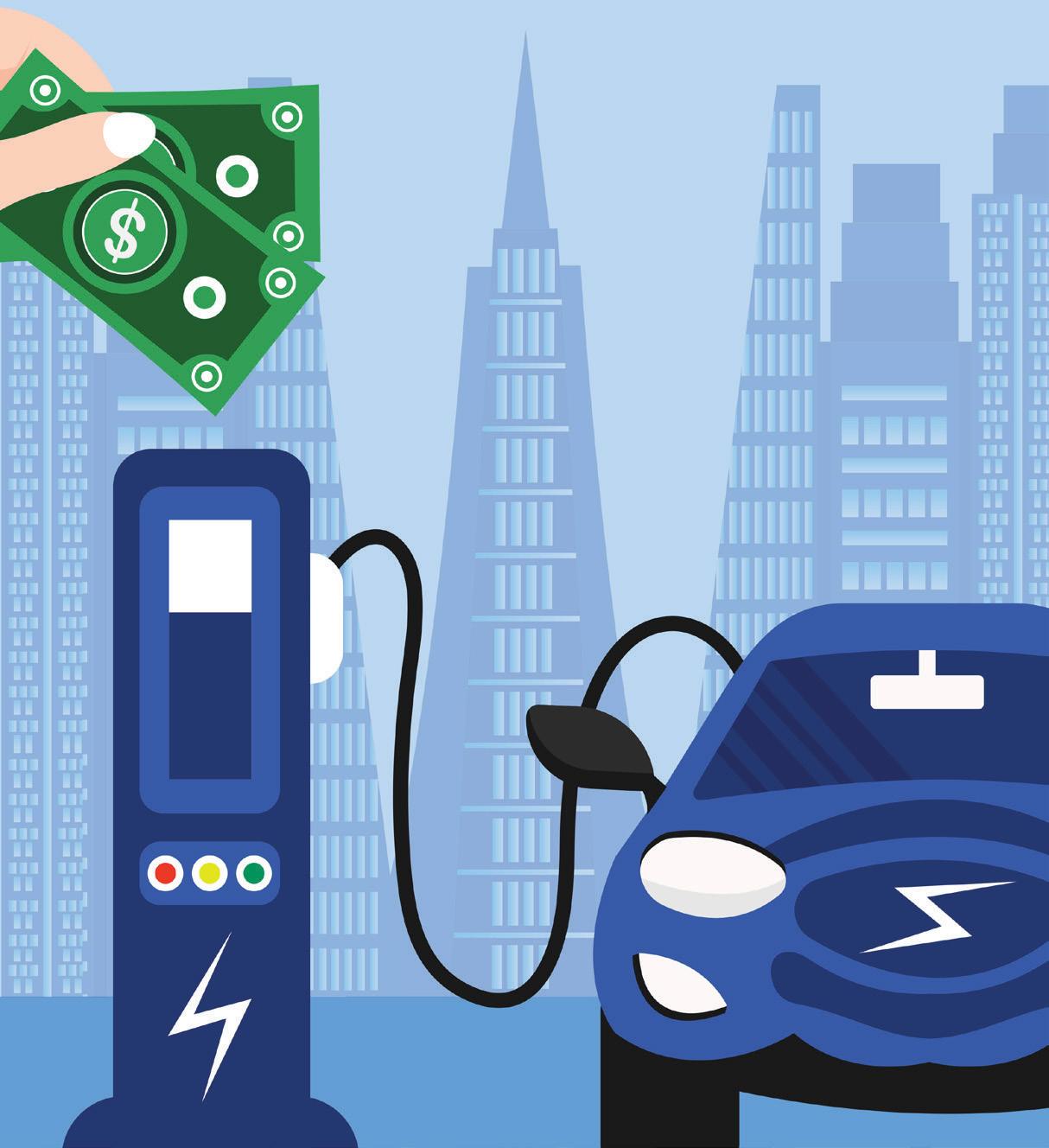
4 minute read
Electric Vehicles
Busato, who also serves as the head of Abrapa, sold 75 per cent of what he expected to harvest in advance and ended up largely missing out on the big surge in prices. Because of the weather, he only produced enough to meet his alreadyexisting contractual obligations. “I could have made a mountain of money,” he says
that it’s overshadowing demand headwinds. The US government and analysts have been projecting a drop in demand due to a slide in clothing purchases and slowing economies, especially in Europe and Asia. And yet all signs point to “much higher” cotton prices in the coming months with crops shrinking, says Andy Ryan, senior relationship manager for Hedgepoint Global Markets in Nashville.
Busato, who also serves as the head of Abrapa, sold 75 per cent of what he expected to harvest in advance and ended up largely missing out on the big surge in prices. Because of the weather, he only produced enough to meet his already-existing contractual obligations. “I could have made a mountain of money,” he says.
The weather has created a secondary headache for the cotton buyers of the world. Untimely rains in regions including Australia, Pakistan and even Brazil have also diminished the quality of the stock, says Peter Egli, director for Plexus Cotton.
So as not to be blindsided for another season, Brazilian farmers are set to increase their cottongrowing areas by 100,000 hectares to 1.7 million hectares for the 2022-2023 season, with plantings beginning in January.
Now that most of the current crop there has been sold, farmers are looking to start hedging the 2023 harvest more aggressively. “We don’t want to lose Asian markets that we gained recently,” says Busato.
All charged for growth






Car-charging investment soars, driven by electric vehicle growth and government funds
More than $4.8bn has been pumped into the electric-vehicle (EV) charging industry this year – a combination of roll-out announcements, debt fi nancing, investment and acquisitions. And this is just the deals that have disclosed fi nancial fi gures.
Large corporates are competing for merger and acquisition (M&A) targets with pure-play charging companies they may previously have acquired, and new competitors are cropping up. Infrastructure investment funds’ appetite is increasing, as they see EV charging as a maturing asset class.
$4.8bn
INVESTED INTO THE EV-CHARGING INDUSTRY

ROBUST OUTLOOK
Explosive growth is still required to go from singledigit billions of investment today to hundreds of billions worth of investment over the next two decades.
Some of the biggest roll-outs this year include a EUR1bn ($1bn) announcement by BP and Iberdrola for 11,000 fast chargers across Europe, and a $650m investment across the US by Blackrock, Daimler Truck and NextEra Energy Resources. Electrify America also got a $450m injection from parent Volkswagen and Siemens for its US charging network.
French energy storage and EV charging provider NW Storm raised €300m, fast-charging manufacturer Freewire raised $125m, and charging operator EVCS raised $69m. Major UK charging companies have also been on a spree, with Raw Charging and Gridserve raising GBP250m ($301m) and GBP200m, and Instavolt securing GBP110m of debt funding.
ATTRACTING INVESTMENT
BloombergNEF estimates that over 73 per cent of investment in the public chargers that were put in the ground globally in 2021 went to ultra-fast charging. While the sub-sector continues to dominate investor funding this year, the whole EV charging supply chain is attracting investment.
Slow-charging operators, so tware platforms, installers, charging component manufacturers and
BNEF EXPECTS CUMULATIVE INVESTMENT IN CHARGING TO EXCEED $1tn+
2040
2030
GLOBALLY
$360bn
wireless charging companies have all received investment. Financers and larger charging companies are si ting through the EV charging fi eld to fi nd the right pieces to fi ll their technological and regional gaps.
Large corporates including Siemens (Electrify America and WiTricity), Shell (Cable Energia and NWG Charging), ABB (InCharge Energy, Numocity, Chargedot) and Schneider Electric (EV Connect) are great examples. But smaller companies are also stepping up their M&A game.
Blink Charging acquired fellow US competitor SemaConnect for $200m and the UK’s EB Charging for about $23.4m. Wallbox announced two acquisitions recently: installer Coil and circuit-board manufacturer Ares Electronics.
New players continue to pop-up, driven by the fast growth and huge availability of government funds. Voltera is an example of a new company launched just this month with backing from EQT Infrastructure, a fund with €77bn under management.
BNEF expects cumulative investment in charging to exceed $360bn globally by 2030 and over $1tn by 2040 to meet the needs of the electric vehicle fleet. More than $1.4tn is needed in a net-zero scenario where the entire vehicle fl eet would be on track to be electric by 2050. Around 60 per cent of this investment is expected to be used for putting DC fast chargers between 50 and 1,000 kW in the ground.
To keep moving the needle on investor confi dence and meet requirements over the coming decades, charging companies will have to show they can scale at pace profi tably. The cost base for EV charging is still evolving and business models have yet to be proven.




